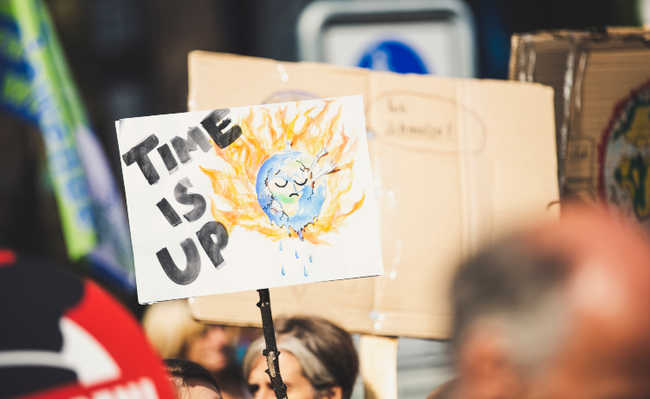What is the Green New Deal
Green New Deal proposes a structural change to contain the financial, energy and climate crisis

Edited and resized image by Markus Spiske is available on Unsplash
O Green New Deal (in Portuguese, New Green Agreement or Novo Trato Verde ) is a set of economic proposals that aim to contain the so-called “triple crisis”. The creation of the term was inspired by the set of economic proposals implemented by US President Franklin D. Roosevelt, called New Deal .
Gathered since 2007, the members of the Green New Deal propose a structural change to contain the financial, energy and climate crisis, called the “triple crisis”.
- What is climate change in the world?
The Agreement implies financial and tax regulation, a program to reduce the use of fossil fuels and combat unemployment and the decline in demand caused by the credit crisis.
The Agreement involves policies and new financing mechanisms that will reduce emissions that contribute to climate change and that will allow for better dealing with the energy shortage caused by 'peak oil'.
According to the proponents of the Green New Deal , the triple crisis of financial collapse, climate change and 'peak oil' has its origins rooted in the globalization model.
Financial deregulation facilitated the creation of almost unlimited credit. with this boom Irresponsible and fraudulent lending patterns emerged, creating bubbles in assets such as property, fueling environmentally unsustainable consumption. This approach generated non-refundable debt in what was considered "debtonation day", when banks suddenly understood the scale of debts on other banks' balance sheets and stopped lending to each other.
- What is environmental sustainability?
In the same year, natural disasters hit entire national economies, and rising prices began to alert the world to potential oil shortages.
O Green New Deal it consists of two main strands. First, it describes a structural transformation in the regulation of national and international financial systems and major changes in tax systems. Second, it requires a sustainable program of energy conservation and investment in renewable energy, along with effective demand management.
Thus, the idea is to generate resilient low-carbon economies, with high employment rates and based on independent sources of energy supply. The action is international in terms of perspective, but it requires management at the local, national, regional and global levels.
Under the New Green Deal, financial systems need to ensure money creation at low interest rates, and that is consistent with democratic goals, financial stability, social justice and environmental sustainability.
The proposals involve lowering the Bank of England's interest rate to help borrowers (loan recipients) build new energy and transport infrastructure, with changes in debt management policy to allow for interest rate reductions across the board. government financing instruments. At the same time, to avoid inflation, the Agreement suggests a strict control of loans and credit generation.
Bankruptcy of financial institutions
Perhaps the boldest demand of the Green New Deal or the forced bankruptcy of financial institutions that demand public money to support them, represented in the figure of large financial banking groups.
The Accord suggests the end of big banks so that space is given to smaller banks. Instead of “too big to fail” institutions, the idea is that institutions need to be small enough to fail without creating problems for the rest of society.
Banks must serve society, not the other way around.
The Green New Deal proposes that institutions should serve the population so that they manage their economies prudently and provide capital for productive and sustainable investments.
Those who break the rules will face sanctions will have their contracts rendered inapplicable by law.
End of tax havens
Another proposition of the Green New Deal it is to minimize corporate tax evasion by restricting tax havens and corporate financial reporting. Tax must be deducted at source (ie the country from which the payment is made) for all income paid to financial institutions in tax havens.
International accounting rules must be changed to eliminate incorrect transfer pricing by requiring companies to report country-by-country. These measures will provide much-needed sources of public funding at a time when economic contraction reduces conventional tax revenues.
The objectives are for the great powers to allow much greater autonomy over domestic monetary policy (interest rates and money supply) and fiscal policy (government expenses and taxes), in addition to establishing a formal international target for concentrations atmospheric greenhouse gases keep the temperature rise as low as 2 °C as possible.
Another proposition is to give poor countries the opportunity to lift themselves out of poverty without stimulating global warming, helping to finance massive investments in climate change adaptation and renewable energy, as well as supporting the free and unrestricted transfer of new energy technologies to these countries.
possible alliances
The signatories believe in the possibility of a political alliance between the labor movement and the environment, between those involved in manufacturing and the public sector, between civil society and academia, industry, agriculture and those working productively in the service industries.










